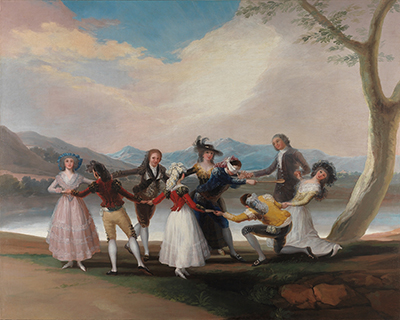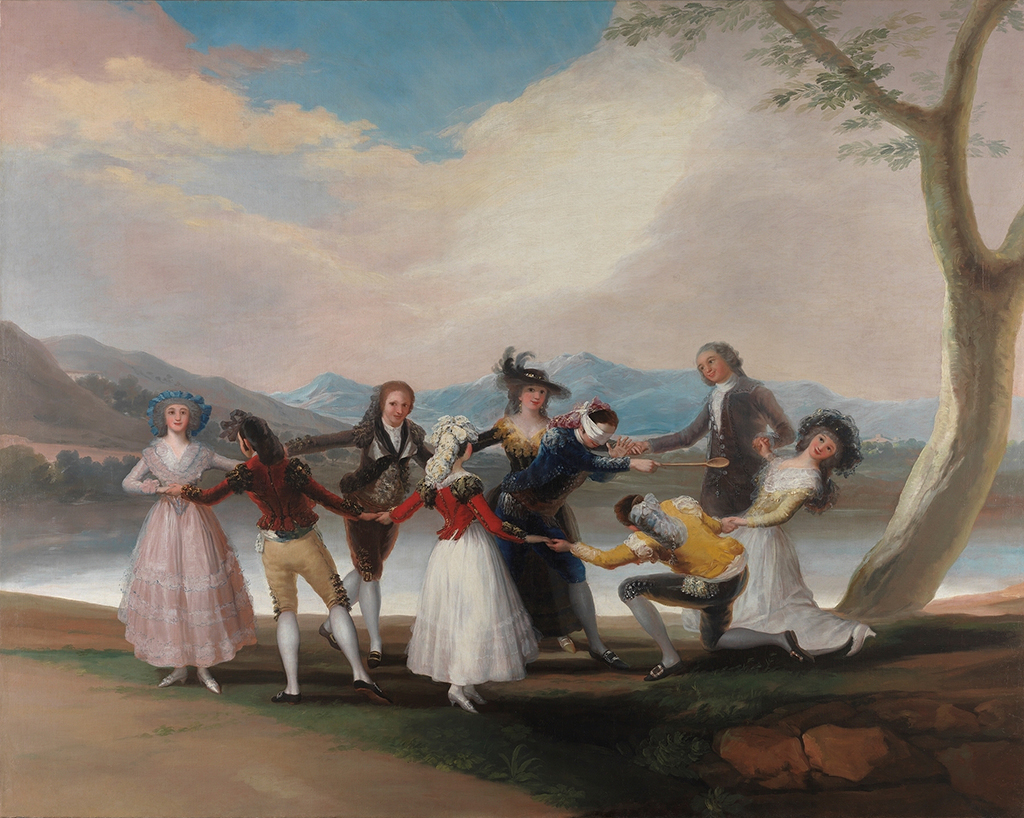The Blind Man’s Bluff is one of the 63 large oil-on-canvas Rococo style tapestry cartoons by the Spanish artist Francisco de Goya. It was among the 6th series of paintings dated 1786-1788.
The painting depicts 10 majos and majas in a circle, playing the blind man's bluff on what seems to be the River Manzanares' banks. A figure of a woman is in the middle, blindfolded and holding a wooden spoon while trying to entice the others dancing around. The art was initially titled The Ladle Game, a popular pastime entertainment during that period, because of the figure holding the wooden spoon. Goya's Rococo painting is typically lively with soft colour schemes of pink and yellow in the women's skirts and luminous background scenery. Similar to his many tapestry cartoons, this painting captures a charming moment of life. However, the painting shows that Goya made some changes in his original painting idea. Behind the lady at the centre of the background, one can barely make out a head and vivid eyes of a young woman, who was obviously eliminated.
In 1788, Goya received a commission for a series of cartoon tapestries by Carlos III of Spain. The Blind Man's Bluff was purposed for the bedroom of the infantas of the succeeding Carlos IV (1748 – 1819) in the Royal Palace of El Pardo. Unfortunately, Carlos III died the same year, forcing the Royal Family to change their royalty status and relocate. Thus Goya never completed the series. Among the series of sketched cartoon tapestries for the El Pardo Palace, this is the only cartoon sketch Goya painted. In 1799, the Duke of Osuna family was in the custody of the painting. However, Pedro Fernández Durán acquired it when their possessions were auctioned. He then handed the preparatory painting to the Prado Museum (Museo del Prado) in 1931, to date.
A French painter and draughtsman Jean-Antoine Watteau (Baptised 1684 - Died 1721) greatly inspired Goya’s main style of rococo painting. Other inspirations for Goya were Diego Rodríguez de Silva y Velázquez (Baptised 1599 – Died 1660), Rembrandt van Rijn (1607 – 1669) among others. In turn, Francisco de Goya’s attitude to style, symbolism, surrealism and emotional undertones inspired many such as Pablo Picasso (1881 – 1973), Salvador Dalí (1904 – 1989), Édouard Manet (1832 – 1883) and extends to the 21st-century artists. Blind Man's Bluff (La gallina ciega), 1788. Francisco de Goya. Oil on canvas; 269 cm × 350 cm (106 in × 140 in). Museo del Prado, Spain.





